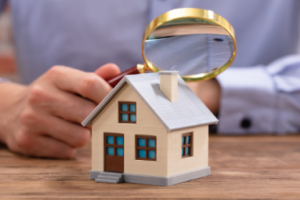Building inspections are becoming common practice for real estate agents, home buyers, sellers, and anyone in the industry. An inspection gives a general idea of what repairs need to be made to ensure the safety of anyone using the building for whatever purpose. In some parts of the country, such as Washington D.C., an inspection can be a precursor to a bidding war between potential buyers and sellers. However, most of the country’s large cities have their building codes, which vary from state to state.
 A building inspection is an inspection done by a building inspector. Usually, someone licensed in one or more fields and is qualified in one or more fields to render a professional opinion on whether a structure meets building code standards. It is the most common reason that a building is inspected. Some of the other reasons include; waterproofing inspections, pest inspections, structural framing inspections, plumbing inspections, electrical inspections, HVAC inspections, interior controls inspections, and exterior controls inspections. A good building inspector will examine the roof, attic, plumbing system, heating system, ventilation system, septic tank, stormwater drainage system, fire alarm system, and other systems to contribute to safety.
A building inspection is an inspection done by a building inspector. Usually, someone licensed in one or more fields and is qualified in one or more fields to render a professional opinion on whether a structure meets building code standards. It is the most common reason that a building is inspected. Some of the other reasons include; waterproofing inspections, pest inspections, structural framing inspections, plumbing inspections, electrical inspections, HVAC inspections, interior controls inspections, and exterior controls inspections. A good building inspector will examine the roof, attic, plumbing system, heating system, ventilation system, septic tank, stormwater drainage system, fire alarm system, and other systems to contribute to safety.
There are many different types of Bayside Building Inspections available to business owners. These inspections cover a wide variety of areas. These inspections can range from a simple inspection of general condition to the complete structure of the commercial building. While each inspection has its particular characteristics, it is very important to note that all inspections should be closely monitored for quality and validity. In the long run, this will allow a commercial building inspector to catch any problems well ahead of time, allowing sufficient time and opportunity to correct the problems before they become a huge issue that disrupts the daily operation of the business.
Most inspections will require a minimum of three different types of inspections to rate a building as satisfactory for occupancy. If the three different types of inspections are satisfactory, then the building will be considered to comply with all local codes and regulations. The next step would be for the commercial building inspector to identify any problems that need to be repaired before occupancy. In many cases, the inspector will recommend that the owner make some repairs before applying for occupancy. The final step of the process would be to submit the appropriate plans for improving the building to the local governing body and submit them for approval.
Click here! To find the reasons why a commercial building inspector may choose to inspect a commercial property. When a building is inspected, the inspector will look for any defects that could potentially pose a risk to the public or the health and safety of those who may occupy the property. It is also important to note that most inspections will be done in conjunction with a routine inspection of the same location. It ensures that the same building or property will have been inspected previously and passed all of the required inspections if there are any problems.